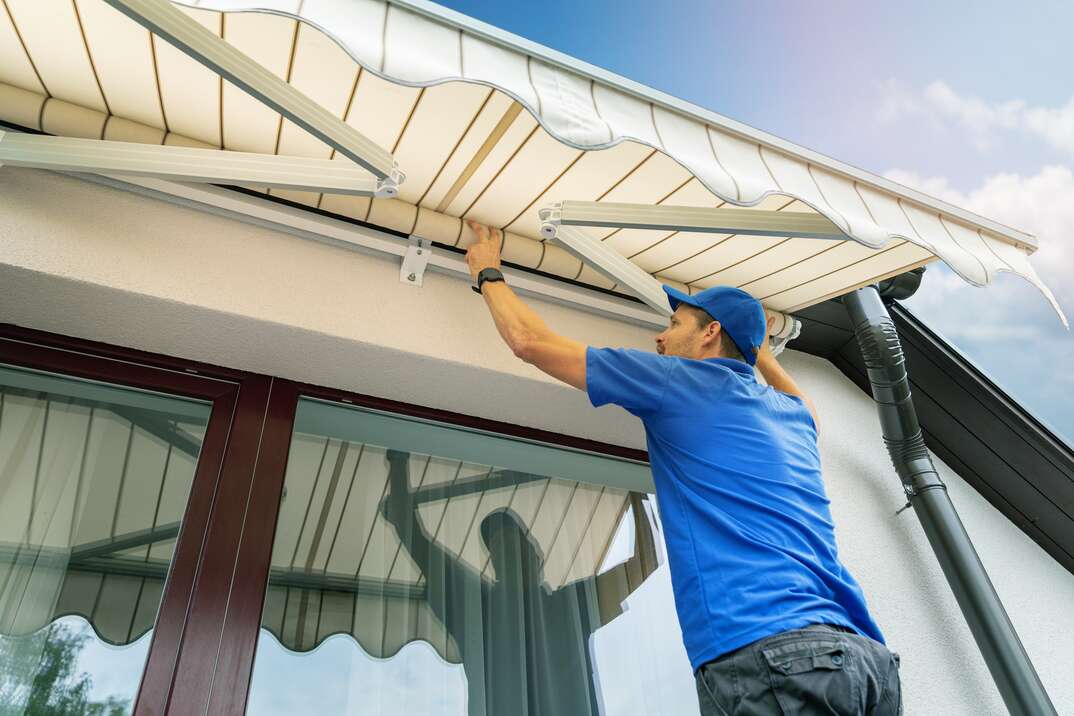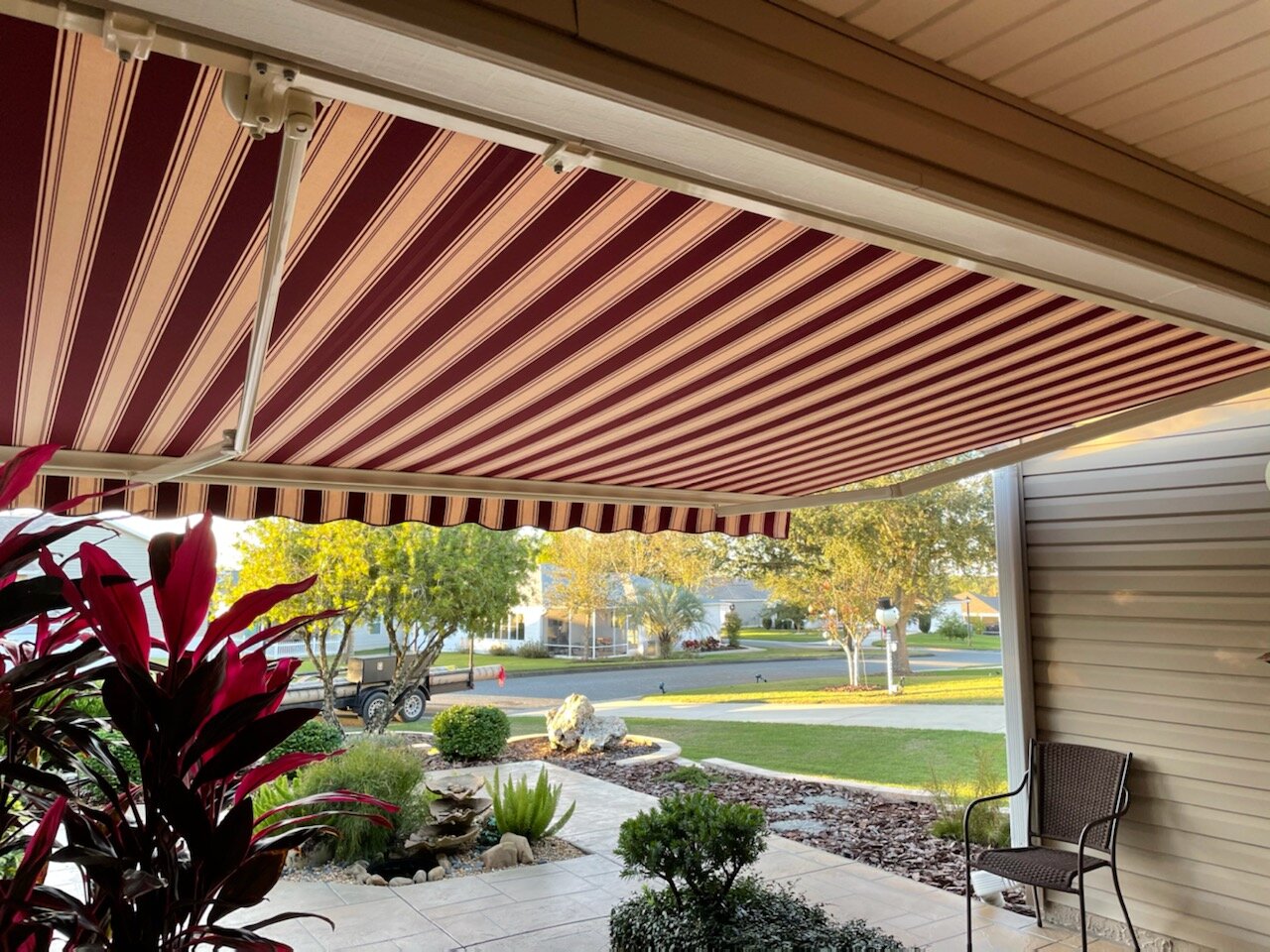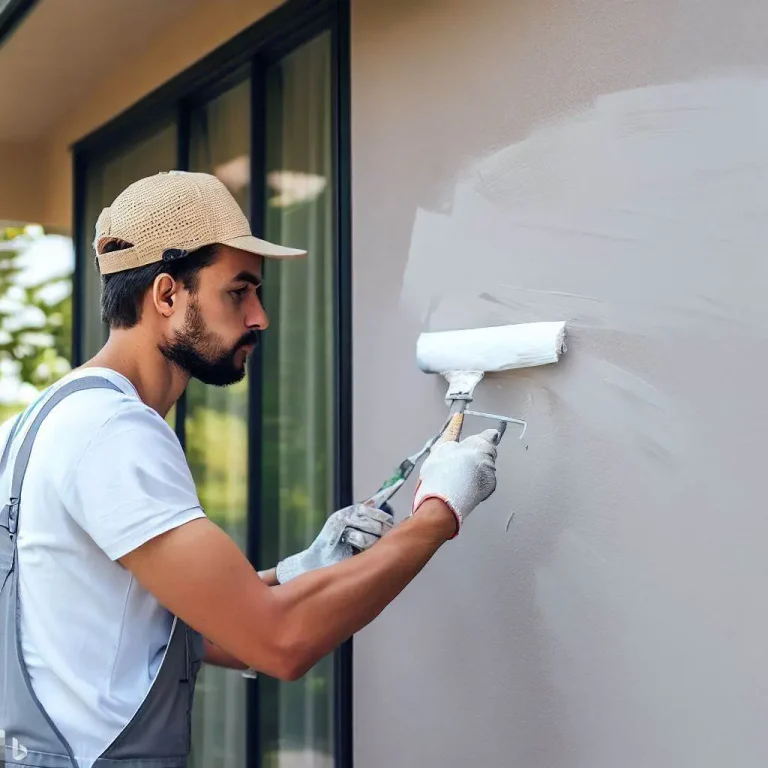Install An Awning Yourself
Installing an awning yourself can be a great way to save money and add a touch of style to your home. Awnings provide shade and protection from the elements and can be a great way to update the look of your home. Installing an awning yourself can be a relatively easy project if you have the right tools and some patience. With the right knowledge and the right materials, you can install an awning in a day and save yourself some money.
What is an Awning?
Awnings are protective coverings that are typically installed over windows and doors. They provide shade and protection from the elements, such as rain and wind. Awnings can be made from a variety of materials, including canvas, aluminum, and vinyl. They come in a variety of styles, colors, and sizes, making them a great way to add a decorative touch to your home. Installing an awning can be a great do-it-yourself project, but there are some considerations to keep in mind before you begin.
Before installing an awning, it’s important to understand the type of awning you’re dealing with. Many awnings are self-supporting, meaning they don’t require any additional support. However, some awnings require additional support, such as posts or brackets. Make sure you understand the type of awning you’re dealing with and the support it requires before you begin the installation process.
In addition to understanding the type of awning you’re dealing with, it’s also important to consider the size and weight of the awning. If the awning is too large or too heavy for your space, you may need to enlist the help of a professional for the installation. It’s also important to consider the weather conditions in your area. If you’re in an area prone to strong winds or heavy rain, you may want to consider having your awning professionally installed.
Installing an Awning
Installing an awning can be a great way to add value to your home, while also providing shade and protection. But if you don’t have the skills or experience to do it, you might be wondering if it is possible to install an awning yourself. The good news is that it can be done, and there are several benefits to doing it yourself.
First, you can save money by installing the awning yourself. Professional installation can be expensive, so if you are on a budget, this is a great way to cut costs. Secondly, you can customize the awning to fit your needs and tastes. You can choose the size, shape, and color, as well as the type of material. This way, you can ensure that your awning is exactly what you envisioned.
Finally, you can have the satisfaction of knowing that you installed it yourself. You will have a sense of pride and accomplishment knowing that you completed the project on your own. Installing an awning can be a challenging, yet rewarding experience. With the right tools and supplies, you can have your awning up and ready to enjoy in no time.
What Tools Are Needed to Install an Awning?
Installing an awning can be a rewarding project for do-it-yourselfers. But before beginning the task, it’s important to understand what tools are needed to complete the job. It’s also important to determine whether you have the appropriate skills and knowledge to install an awning.
The primary tool needed to install an awning is a drill. A power drill will make the process much easier and quicker. Other tools that will be necessary include a ladder, measuring tape, level, wrench, and screws. In addition, a helper may be required to hold the awning in place while the screws are being inserted.
Before beginning the installation process, it’s important to read all manufacturer instructions and safety warnings. This will help ensure the awning is properly installed and secure. Additionally, consider the weather conditions and the area around the awning. If there are any trees, shrubs, or other objects nearby, make sure they are not obstructing the awning.
Installing an awning is not a difficult task. With the right tools and some patience, a do-it-yourselfer can install an awning in just a few hours. Just make sure to take the proper safety precautions and follow the manufacturer’s instructions. With a little bit of effort, you’ll be able to enjoy your new awning in no time.
Preparing the Area for Installation
Installing an awning can be a daunting task, especially for a novice DIYer. However, with the right preparation and tools, it can be a rewarding and cost-effective endeavor. Before beginning the project, it is important to properly prepare the area for the awning installation.
First and foremost, check your local building codes and regulations to ensure the awning meets all the requirements. Then, decide the right location for the awning- this will depend on the size, shape, and type of awning. This will also help you determine the number of posts and brackets that you will need. Make sure to measure the area of the awning to ensure that it fits properly.
Next, check the area for any obstacles that may interfere with the installation process. This can include any nearby structures, trees, or power lines. If there are any obstacles, it is best to hire a professional to ensure that the awning is installed safely and securely.
Finally, make sure to have all the necessary tools and materials, such as a drill, screws, brackets, and bolts. It is also important to make sure that the awning is properly secured to the ground and that the posts and brackets are securely fastened to the wall or structure.
With the right preparation and tools, you can install an awning yourself. Taking the time to carefully plan and prepare the area for installation can help ensure a successful awning installation.

Installing the Awning
Installing an awning yourself can be a daunting task, but it is not impossible. The key is to take your time, read instructions thoroughly, and prepare for any surprises. To begin, you will need to purchase the correct size awning for your space, as well as any tools and hardware needed for installation. Then, you should carefully follow the manufacturer’s instructions for installation. This will usually involve measuring the space, securing the mounting brackets, and then attaching the awning to the brackets. Once the awning is securely fastened, you can enjoy the shade and protection it provides.
While installing an awning on your own can be a time-consuming and challenging endeavor, it can also be a rewarding experience. With careful planning, preparation, and attention to detail, you can successfully install an awning that will last for years to come. Additionally, by doing the job yourself, you can save money and have peace of mind knowing you did it right.
Tips for Successful Awning Installation
Installing an awning can be a daunting task for even the most experienced DIYers. Not only do you need the right tools and materials, but you also need to know the proper steps to take to ensure the awning is securely and safely installed. To make sure your awning installation goes smoothly, here are some tips to follow:
First, measure the area where you plan to install the awning and make sure there is enough space for it. You should also check the area for any electrical wires or pipes that could be in the way. After that, create a plan that includes the exact measurements of the awning and the tools needed to complete the installation.
Next, make sure you have the right hardware and supplies for the job. An awning typically requires mounting brackets, screws, and other fasteners, which must be able to hold the weight of the awning in place. If the awning is particularly large or heavy, you may need to purchase additional hardware for added support.
Finally, it’s important to follow all the instructions provided with the awning. As you begin to install the awning, make sure all the components are properly aligned and secure. If you have any questions, it’s best to contact the manufacturer for additional assistance.
By following these tips, you can be sure your awning installation goes smoothly and securely. With the right preparation and supplies, you can successfully install an awning yourself.
Common Mistakes to Avoid During Awning Installation
Installing an awning is a great way to add a touch of style to your home or business. But, like any home improvement project, it’s important to make sure you’re doing it right. That’s why it’s important to be aware of the common mistakes that can occur when installing an awning.
One of the most common mistakes is failing to properly measure the area where the awning will be mounted. It’s important to measure the correct distance between the awning and the wall or support structure. Additionally, be sure to take into account any obstructions or changes in the terrain that may affect the installation.
Another common mistake is not having the right tools for the job. To ensure a successful installation, make sure you have all the tools you need before you start. This includes the right type of drill bit, screws, and anchors. Additionally, you may need a ladder, measuring tape, and a level.
It’s also important to select the right material for your awning. Different materials have different strength and durability ratings, so it’s important to select the material that’s right for your climate and environment. For instance, if you live in a sunny area, you’ll want to select an awning material that’s designed to resist fading and UV damage.
Lastly, it’s important to properly secure the awning to the structure you’re mounting it on. Not doing so can result in damage to your home or business, and put you and your family at risk. Make sure you use the correct type of screws and anchors to ensure your awning is secure.
Maintenance and Care of Your Awning
Awnings are a great addition to any outdoor space, providing shelter from the sun and creating a comfortable atmosphere. With the right maintenance and care, your awning can last for many years. While you can install an awning yourself, it is important to remember that proper maintenance and care are essential for ensuring that your awning remains in optimal condition.
To keep your awning in top shape, regular cleaning is a must. This includes brushing off dirt and debris, and occasionally washing it with a mild detergent and a soft-bristled brush. You should also inspect the awning for any rips, tears, or other damage, and repair or replace the fabric as needed.
It is also important to keep an eye out for any signs of rust or corrosion on the metal components. If you notice any signs of rust, you should sand the area, apply a rust-inhibiting primer, and repaint the area with a rust-resistant paint.
Finally, you should also inspect the awning for any signs of wear or tear. If you notice any loose or missing parts, you should replace them as soon as possible. Additionally, you should regularly check the awning for any signs of mildew or mold, and treat the affected area with a mold-inhibiting solution.
By following these simple maintenance and care tips, you can ensure that your awning remains in great condition for many years to come. If you have any questions or concerns about caring for your awning, it is best to consult a professional.
FAQs About the Can You Install An Awning Yourself?
What tools will I need to install an awning?
You will need basic tools such as a power drill, hammer, level, tape measure, and ladder.
Is it difficult to install an awning?
It may be difficult if you have no experience with home improvement projects. However, with the right tools and instructions, it is possible to install an awning yourself.
How long does it take to install an awning?
It depends on the size of the awning and the complexity of the structure. Generally, it should take about a day to install the awning.
Conclusion
It is possible to install an awning yourself if you are comfortable and confident in doing so. Installing an awning yourself is a great way to save money and get the job done quickly. However, it is important to understand the basics of awning installation and to take the necessary safety precautions. If you are unsure, it is best to seek professional help.







